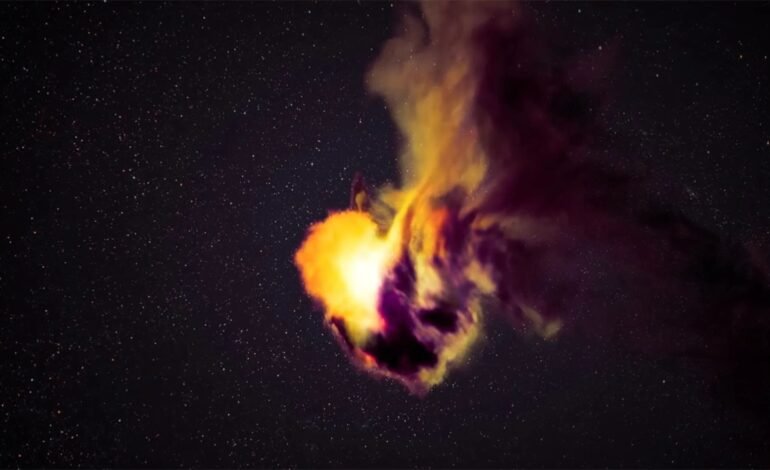The strangest supernova ever seen reveals a star stripped to its core

An international team of astrophysicists has spotted the strangest supernova, which is unlike anything seen before. The explosion, known as SN2021yfj, was unusually rich in silicon, sulphur and argon, rather than the lighter hydrogen and helium that typically dominate.
The research, led by Northwestern University in the United States and published in Nature, provides rare direct evidence of the long-theorised “onion-like” layering inside massive stars. For the first time, astronomers have been able to glimpse material from the deeper layers, stripped bare before the star collapsed.
Science & Environment — More from EyeOnLondon
Explore more stories in science, health and the environment.
Curiosity Rover learning to multitask on Mars
Published: 15th August 2025
NASA’s rover is testing new methods to carry out science and driving at the same time, maximising its time on the Red Planet.
Read the storyMore Science & Environment
Vegas mosquito problem called a ticking time bomb
Published: 12th August 2025
Scientists warn rising numbers of invasive mosquitoes in Las Vegas could become a major public health issue.
Read the storyMore Science & Environment
Blue whales going silent worries scientists
Published: 10th August 2025
New research shows blue whales are reducing their vocal calls — raising questions about ocean noise and long-term impacts.
Read the storyMore Science & Environment
Scientists have long believed that stars 10 to 100 times heavier than the Sun burn through fuel in stages, creating shells of progressively heavier elements until the innermost core of iron finally collapses. But the newly observed supernova suggests something far more violent: the star shed nearly all of its outer layers before detonating, exposing its silicon and sulphur-rich interior.
“This is the first time we’ve seen a star stripped right down to its inner layers,” said Steve Schulze, who led the study at Northwestern’s Center for Interdisciplinary Exploration and Research in Astrophysics. “It shows stars can lose far more material than we thought and still produce a brilliant explosion.”
SN2021yfj was first detected in September 2021 by the Zwicky Transient Facility, a sky survey instrument in California that searches for fleeting cosmic events. Follow-up analysis with the Keck Observatory in Hawai‘i confirmed its unusual spectrum, dominated by heavier elements rather than the expected lighter gases.
Adam Miller, senior author of the study, explained that the team almost missed the chance to capture the spectrum because of cloud cover and telescope availability. “We went to bed thinking we’d lost the data. By chance a colleague at UC Berkeley secured the observation that revealed how strange this explosion really was,” he said.
The discovery has sparked new debate about how massive stars end their lives. One possible explanation is that a star can literally tear itself apart through extreme bursts of nuclear fusion, ejecting layer after layer until only the inner shells remain. This supports models that propose a violent process known as pair-instability, where runaway fusion reactions push material outward in pulses.
The team believes this type of explosion is extremely rare. With only one clear example so far, they stress the need for more discoveries before theories can be confirmed. But the work is already reshaping understanding of stellar death and the diversity of cosmic pathways.
For more stories on space, science, and discovery, follow EyeOnLondon for informed and independent reporting.
[Image Credit | W.M. Keck Observatory/Adam Makarenko]
Follow us on:
Subscribe to our YouTube channel for the latest videos and updates!
We value your thoughts! Share your feedback and help us make EyeOnLondon even better!









